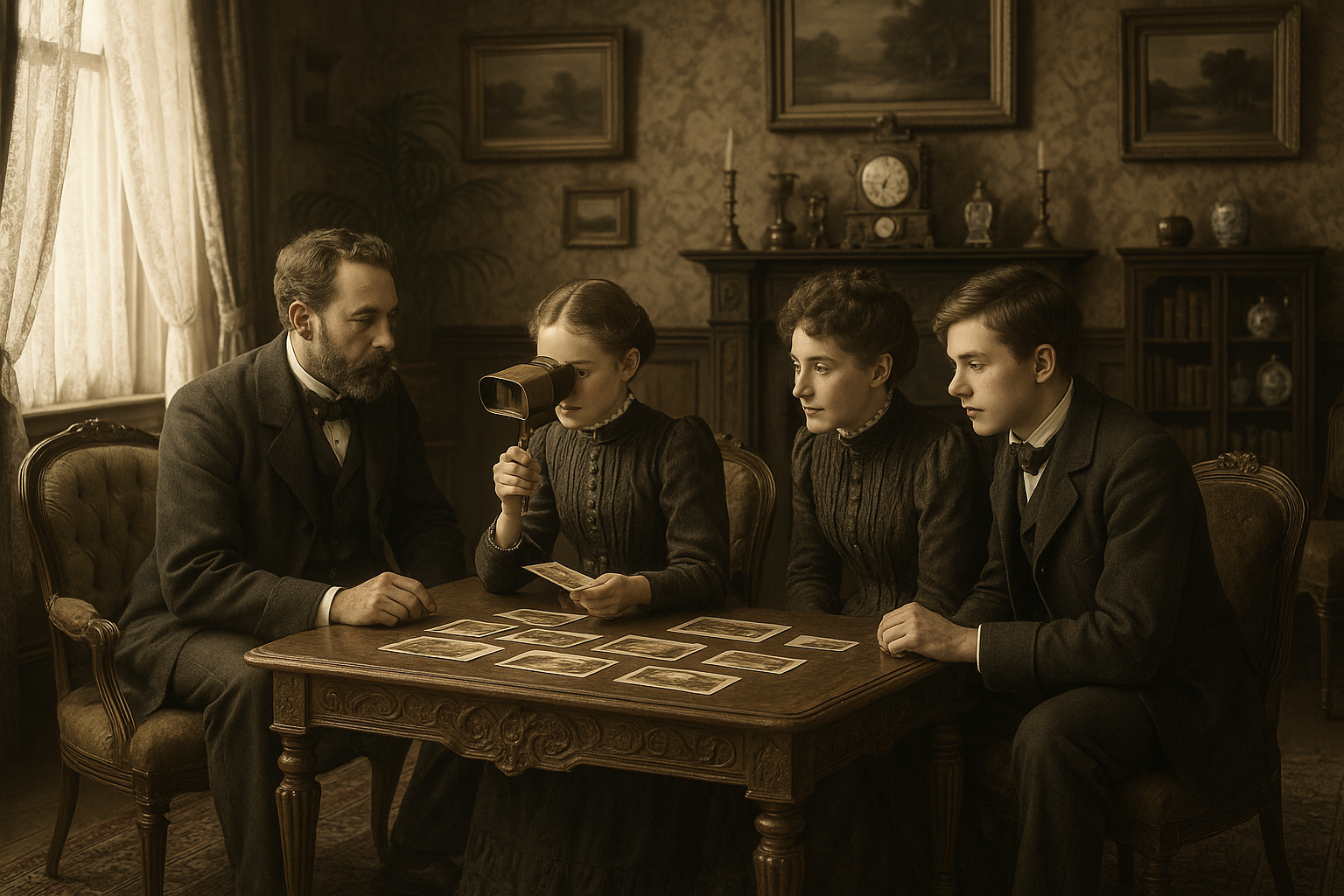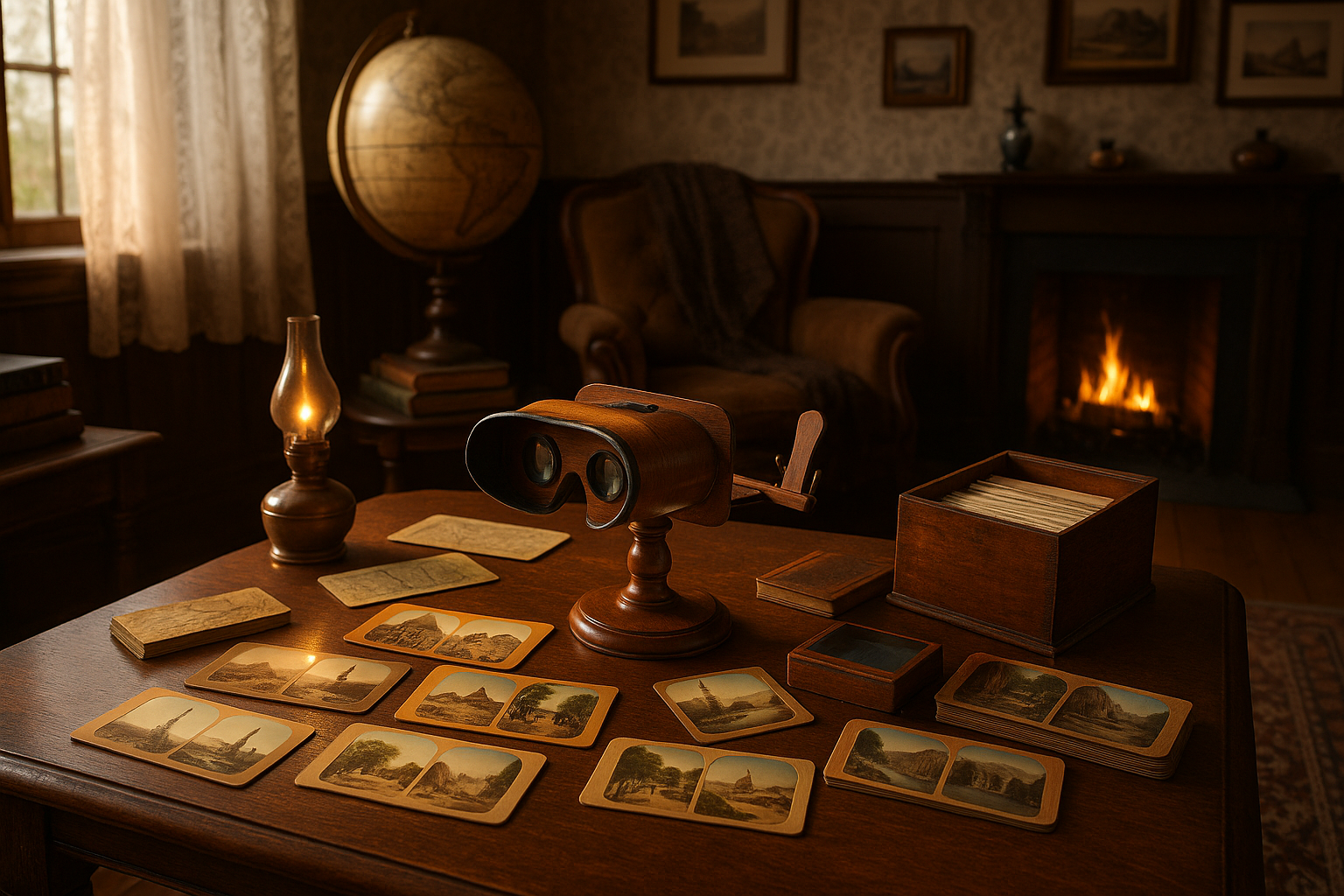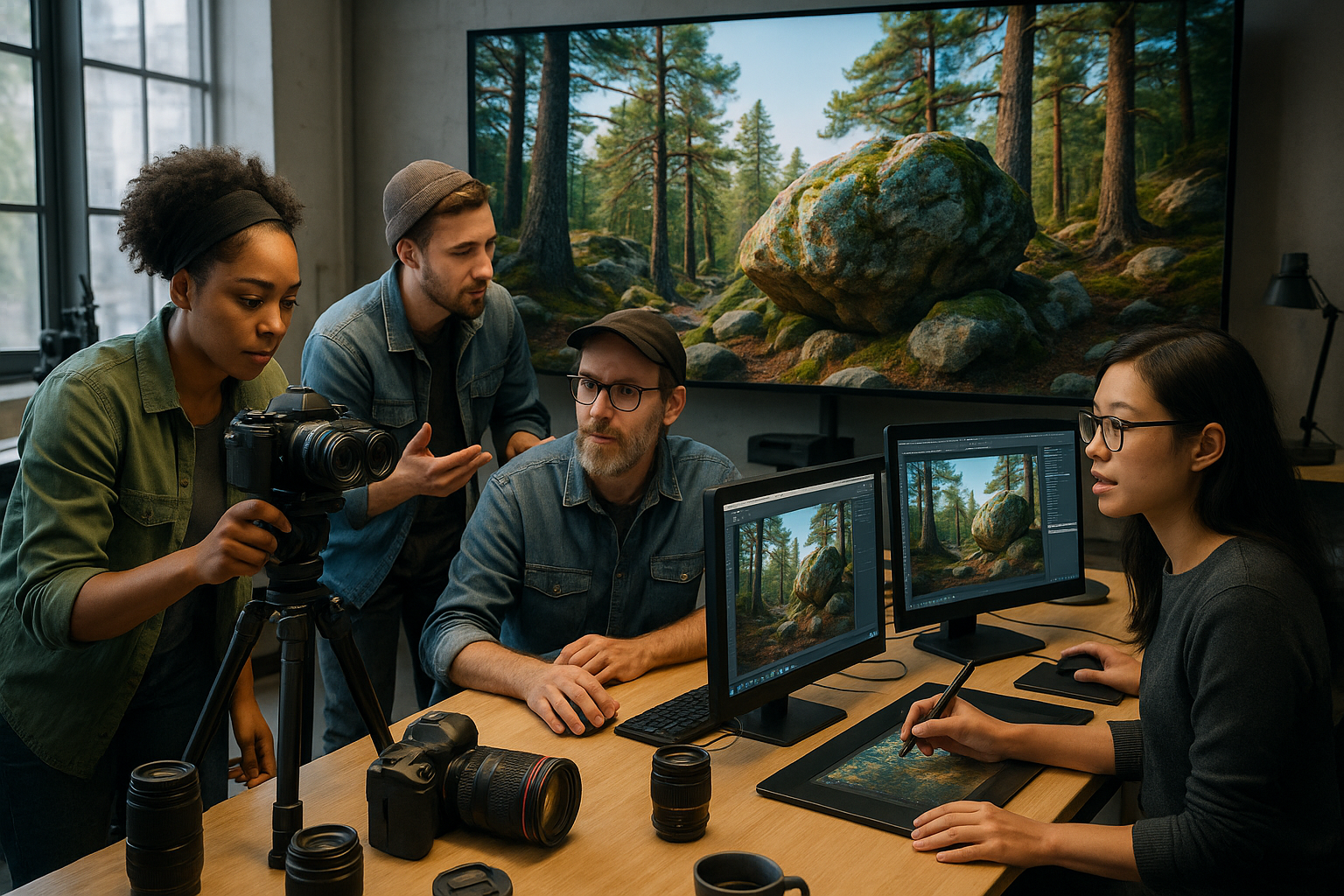In a world where every detail matters, having clear and sharp vision is more than just a necessity; it’s a gateway to experiencing life in its most vibrant form. Imagine waking up each day to a world where the colors are brighter, the details are crisper, and the outlines of everything you see are well-defined. This is the power of enhanced optical quality, a subject that is not only technical but also deeply personal and profoundly impactful. Whether you’re an avid reader, a digital artist, or simply someone who appreciates the beauty of the world around you, achieving optimal vision can significantly transform your daily experiences. 🌟
As we delve into the fascinating realm of optical enhancement, we begin by understanding the core components that contribute to superior vision. This journey takes us through the intricate workings of the human eye, examining how modern advancements in lens technology and optical devices are making it possible to see the world more clearly than ever before. We’ll explore the latest innovations in corrective lenses, surgical procedures, and digital aids designed to correct vision impairments and enhance the natural capabilities of our eyes. By unraveling the science behind these technologies, we aim to equip you with the knowledge needed to make informed decisions about your eye health and visual needs.
But the story doesn’t end with technological advancements. We’ll also delve into the lifestyle choices and practices that play a crucial role in maintaining and improving eye health. From nutritional tips to exercises that strengthen your eye muscles, discover how small changes in your daily routine can lead to significant improvements in your vision quality. Moreover, we will discuss the psychological and emotional aspects of seeing clearly, exploring how a sharper vision can boost confidence, reduce stress, and enhance overall quality of life. 🌿
Prepare to embark on a comprehensive exploration of the world of optical enhancement, as we aim to illuminate the pathways to clearer, sharper vision. By the end of this article, you will not only understand the technicalities behind improved optical quality but also appreciate the profound effects that clearer vision can have on your personal and professional life. Whether you’re seeking solutions for existing vision problems or simply wish to enhance your current visual experience, this guide promises to provide valuable insights and practical advice. So, sit back, relax, and let us guide you through the lens to a world of clarity and precision. 👁️✨
The Importance of Optical Quality
Optical quality plays a crucial role in our daily lives, often without us even realizing it. The ability to see clearly impacts everything from the mundane tasks of reading and driving to the profound experience of observing a breathtaking view. Therefore, understanding and enhancing optical quality is vital for a sharper vision experience. The term “optical quality” refers to the clarity and accuracy with which lenses and optical systems transmit images to the eye. Poor optical quality can lead to eye strain, headaches, and impaired vision, affecting one’s quality of life.
Optical quality is not only important in prescription eyeglasses or contact lenses but also in various optical devices such as cameras, telescopes, and microscopes. Each application demands a specific set of qualities to achieve optimal performance. For instance, camera lenses require precise focusing capabilities, while telescopes need high magnification with minimal distortion. As technology advances, the demand for superior optical quality continues to grow, making it an essential field of study and innovation.
For individuals with vision impairments, optical quality is particularly significant. Prescription lenses with high optical quality can drastically improve daily living by providing clear and accurate vision. Similarly, advancements in surgical procedures like LASIK rely heavily on understanding and improving optical quality to ensure successful outcomes. As the field of optometry continues to evolve, the focus on enhancing optical quality remains at the forefront, aiming to provide sharper and more comfortable vision experiences for everyone.
Factors Affecting Optical Quality
Lens Design and Material
The design and material of lenses are fundamental factors affecting optical quality. Different materials, such as glass and various plastics, offer distinct advantages and disadvantages. Glass lenses, while providing excellent optical clarity, are heavier and more prone to breaking. In contrast, plastic lenses are lighter and more durable, but they may not always match the optical clarity of glass. Recent advancements have introduced high-index plastics and polycarbonate materials that strike a balance between weight, durability, and optical clarity.
Lens design also plays a critical role in optical quality. Aspheric lenses, for example, are designed to reduce distortions and aberrations that can occur with traditional spherical lenses. This design innovation allows for thinner, lighter lenses that offer superior optical performance. Progressive lenses are another example, providing a seamless transition between different focal points, ideal for individuals with presbyopia.
To better understand the differences in lens materials, let’s take a look at the following comparative table:
| Lens Material | Optical Clarity | Weight | Durability |
|---|---|---|---|
| Glass | High | Heavy | Fragile |
| Plastic | Moderate | Light | Durable |
| High-Index Plastic | High | Light | Durable |
| Polycarbonate | Moderate | Very Light | Very Durable |
Assista ao vídeo abaixo para uma explicação detalhada sobre como escolher o material certo para suas lentes: [Link to YouTube Video: “Choosing the Right Lens Material” from the EyeHealthHQ channel]
Coatings and Treatments
Coatings and treatments applied to lenses can significantly enhance optical quality by reducing glare, improving scratch resistance, and providing protection against harmful UV rays. Anti-reflective (AR) coatings are particularly beneficial as they minimize reflections from the lens surface, enhancing contrast and visual clarity, especially in low-light conditions. Similarly, scratch-resistant coatings extend the lifespan of lenses, maintaining their clarity over time.
UV protection is another essential consideration for optical quality. Prolonged exposure to UV rays can cause damage to the eyes, leading to cataracts and other vision issues. Lenses with UV coatings block these harmful rays, ensuring the eyes remain protected even on bright, sunny days. Additionally, blue light filtering treatments are becoming increasingly popular, offering protection against the potentially harmful effects of prolonged exposure to digital screens.
Explore the benefits of different lens coatings with the following comparison:
| Coating Type | Benefit | Common Applications |
|---|---|---|
| Anti-Reflective | Reduces glare, improves clarity | Eyeglasses, camera lenses |
| Scratch-Resistant | Enhances durability | All types of lenses |
| UV Protection | Blocks harmful UV rays | Sunglasses, prescription lenses |
| Blue Light Filtering | Reduces blue light exposure | Computer glasses, digital device screens |
Environmental and Usage Factors
Environmental conditions and how lenses are used can also affect optical quality. For instance, lenses exposed to harsh conditions such as sand, dust, or water can suffer from surface damage, impacting clarity. Regular cleaning and maintenance are essential to preserve lens quality over time. Using proper cleaning solutions and soft cloths helps avoid scratches and other damage that can degrade optical quality.
The way lenses are stored also plays a part in maintaining their quality. Protective cases can prevent scratches and other physical damage when lenses are not in use. Temperature extremes should be avoided, as they can warp lenses or damage coatings. For individuals who frequently transition between environments, photochromic lenses that adapt to changing light conditions offer a convenient solution, maintaining optimal optical quality in various settings.
For more insights into maintaining optical quality in challenging environments, check out this informative video: [Link to YouTube Video: “Caring for Your Lenses” from LensCareTV channel]
Technological Advances in Optical Quality
Adaptive Optics
Adaptive optics is a groundbreaking technology initially developed for astronomy but now being adapted for vision correction. This technology involves real-time adjustments to optical elements, compensating for distortions caused by atmospheric turbulence or imperfections in the eye. Adaptive optics can significantly enhance optical quality, leading to sharper, clearer vision, especially for individuals with complex refractive errors.
In the field of astronomy, adaptive optics has revolutionized the way telescopes capture images, allowing for incredibly detailed observations of celestial objects. By adjusting the shape of mirrors in real-time, telescopes can correct for atmospheric distortions, providing images with unprecedented clarity. This same principle is being applied to eyeglasses and contact lenses, where adaptive optics can correct for higher-order aberrations that traditional lenses cannot address.
For those interested in the science behind adaptive optics, here’s a fascinating video on its applications: [Link to YouTube Video: “Adaptive Optics Explained” from SciTechWorld channel]
Wavefront Technology
Wavefront technology is another advanced method used to enhance optical quality. Originally developed for LASIK surgery, wavefront technology involves mapping the unique imperfections of an individual’s eye, allowing for highly personalized vision correction. By creating a detailed map of how light waves travel through the eye, wavefront-guided procedures can correct for subtle aberrations, resulting in sharper and more precise vision.
This technology has been extended to eyeglass and contact lens design, offering customized solutions that address specific visual needs. Wavefront lenses can reduce issues such as halos and glare, providing improved night vision and overall optical quality. As this technology continues to evolve, it holds the potential to revolutionize vision correction by offering unprecedented levels of customization and precision.
For a deeper dive into wavefront technology and its impact on optical quality, watch this educational video: [Link to YouTube Video: “Wavefront Technology in Vision Correction” from VisionTechToday channel]
Smart Lenses
Smart lenses represent the future of optical quality, integrating digital technology with traditional lens design. These lenses are capable of dynamically adjusting focus, similar to a camera lens, offering optimal vision at various distances without the need for multiple pairs of glasses. Smart lenses are particularly beneficial for individuals with presbyopia, providing seamless transitions between near and far vision.
Additionally, smart lenses can incorporate features such as augmented reality displays, health monitoring, and even photochromic adjustments, enhancing both optical quality and functionality. While still in the early stages of development, smart lenses promise to redefine the way we think about vision correction, offering a glimpse into a future where lenses do much more than simply correct refractive errors.
To explore the potential of smart lenses and their applications, check out this inspiring video: [Link to YouTube Video: “The Future of Smart Lenses” from TechVisionaries channel]
Practical Tips for Enhancing Optical Quality
Regular Eye Examinations
One of the simplest yet most effective ways to enhance optical quality is through regular eye examinations. Comprehensive eye exams can detect changes in vision and identify conditions that may affect optical quality, such as astigmatism, cataracts, or macular degeneration. Early detection and intervention can prevent these conditions from worsening and help maintain clear vision.
Eye exams also provide an opportunity to update prescriptions, ensuring that lenses offer the best possible optical quality. Over time, changes in vision can lead to outdated prescriptions, resulting in reduced clarity and increased strain. By scheduling regular eye exams, individuals can ensure that their vision correction solutions continue to meet their needs, providing optimal optical quality at all times.
Choosing the Right Lens and Frame
Selecting the right combination of lens and frame is crucial for enhancing optical quality. Lenses should be tailored to individual needs, considering factors such as material, design, and coatings. Additionally, the frame should fit comfortably and securely, aligning the lenses correctly with the eyes. A poorly fitting frame can lead to misalignment, reducing optical quality and causing discomfort.
- Consult with a specialist to determine the best lens material for your needs.
- Consider coatings that enhance optical quality, such as anti-reflective and UV protection.
- Ensure frames fit well to prevent misalignment and discomfort.
Maintaining and Caring for Lenses
Proper maintenance and care are essential for preserving optical quality. Regular cleaning with appropriate solutions prevents the buildup of dirt and debris, which can scratch lenses and degrade clarity. It’s also important to store lenses in protective cases when not in use, shielding them from environmental damage.
For those who wear contact lenses, hygiene is paramount. Following proper cleaning and replacement schedules can prevent infections and maintain optimal optical quality. Additionally, being mindful of environmental factors, such as avoiding exposure to harsh chemicals or extreme temperatures, can further protect lenses and ensure they continue to provide clear, comfortable vision.

Conclusion
Creating a world where everyone can see clearly is more than just a noble endeavor; it is a fundamental necessity for enhancing quality of life and enabling individuals to fully engage with the world around them. Throughout this article, we explored the multifaceted aspects of optical health, delving into the technological advancements, lifestyle adjustments, and preventative measures that can dramatically improve one’s vision. From understanding the anatomy of the eye to appreciating the nuanced intricacies of light and how it influences vision, we have laid a comprehensive foundation for those seeking to enhance their optical experience.
At the heart of our discussion lies the anatomy of the eye, an intricate organ that allows us to perceive and interact with our environment. We explored how various components of the eye work in harmony to process light, and how this process is integral to the clarity and sharpness of our vision. Understanding these basics is crucial as it lays the groundwork for recognizing when something might be amiss, prompting early detection and intervention.
A significant portion of our conversation revolved around the advancements in optical technology. With the advent of innovative corrective solutions such as advanced lenses, contact lenses, and even surgical interventions like LASIK, individuals have more options than ever to correct refractive errors and other visual impairments. The rise of digital eye strain in our screen-centric world has also propelled the development of blue light blocking glasses and screen filters, which serve as preventative measures to reduce eye fatigue and protect long-term vision health.
In conjunction with technology, we emphasized the role of lifestyle in maintaining optimal vision. Nutrition, for instance, plays a vital role, with specific nutrients such as omega-3 fatty acids, lutein, and zeaxanthin contributing to eye health. We encouraged incorporating eye-friendly foods into daily diets and highlighted the importance of regular exercise, not just for general health but for its positive impact on reducing the risk of diseases such as diabetes, which can have profound effects on vision.
Preventative eye care was another crucial point of focus, underscoring the importance of regular eye exams and being aware of family history, which can predispose individuals to certain eye conditions. Early detection through routine check-ups can prevent or mitigate issues such as glaucoma, cataracts, and age-related macular degeneration, ensuring longevity in optical health.
The significance of adopting a holistic approach to eye care cannot be overstated. By combining technological solutions, lifestyle changes, and preventative care, individuals can not only enhance their vision but also preserve it for years to come. The power of clear vision extends beyond the individual, impacting personal interactions, professional productivity, and overall well-being.
In conclusion, the journey to achieving and maintaining clear vision is both personal and universal. It is a journey that requires proactive engagement, informed decision-making, and a commitment to lifelong learning. By taking the steps outlined in this article, you are investing in a future where the world is seen in all its vivid detail and vibrant color.
We encourage you to share this knowledge with friends, family, and colleagues. Vision health is a communal journey, and by spreading awareness, you contribute to a future where everyone has the opportunity to see clearly and live fully. 💡👁️
For further reading and exploration, consider visiting resources such as the American Academy of Ophthalmology [www.aao.org](https://www.aao.org) and All About Vision [www.allaboutvision.com](https://www.allaboutvision.com), where you can find a wealth of information on the latest in eye health research and advancements.
Thank you for embarking on this enlightening journey with us. Let’s continue to see the world more clearly, together.
Toni Santos is a visual historian and artisan whose creative lens is captivated by the forgotten marvels of antique optical devices. Through his thoughtful storytelling, Toni revives the instruments that once transformed light into wonder—camera obscuras, magic lanterns, kaleidoscopes, and other ingenious tools that shaped our earliest visual imaginations.
His journey is rooted in a fascination with how humans have long sought to bend, reflect, and reveal the unseen. Whether tracing the mechanical poetry of 19th-century projectors or illustrating the tactile elegance of early lenses, Toni’s work invites us to see vision itself as an evolving art form.
Blending handcrafted design with historical inquiry, Toni brings to life the material soul of these devices—celebrating not just how they functioned, but what they meant. His creations and curated stories illuminate a world where science, illusion, and beauty were intricately linked through glass and brass.
As the curator of Vizovex, Toni shares detailed studies, reconstructed artifacts, and immersive content that help others rediscover the origins of visual technology and the magic of analog perception.
His work is a tribute to:
The craftsmanship behind early visual instruments
The wonder of seeing through the eyes of another century
The intersection of optics, art, and imagination
Whether you’re a collector, a designer, or someone drawn to the lost poetry of vision, Toni welcomes you into a world where light is a storyteller—one prism, one lens, one forgotten invention at a time.





